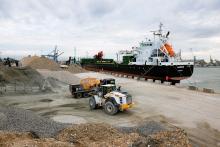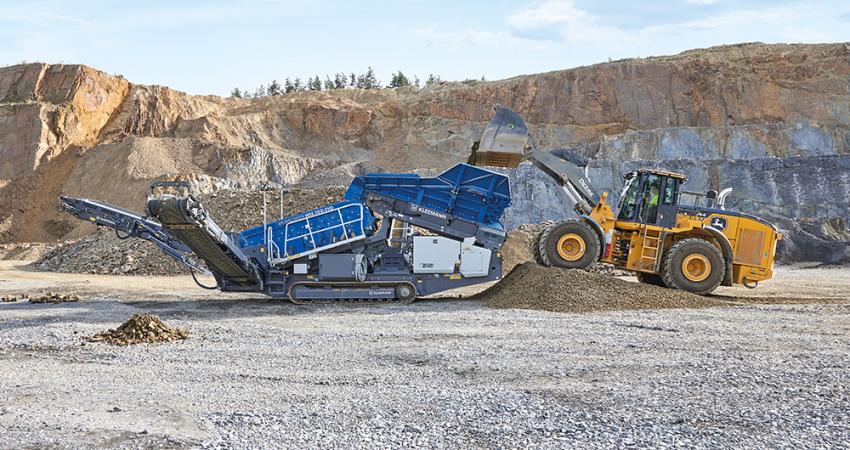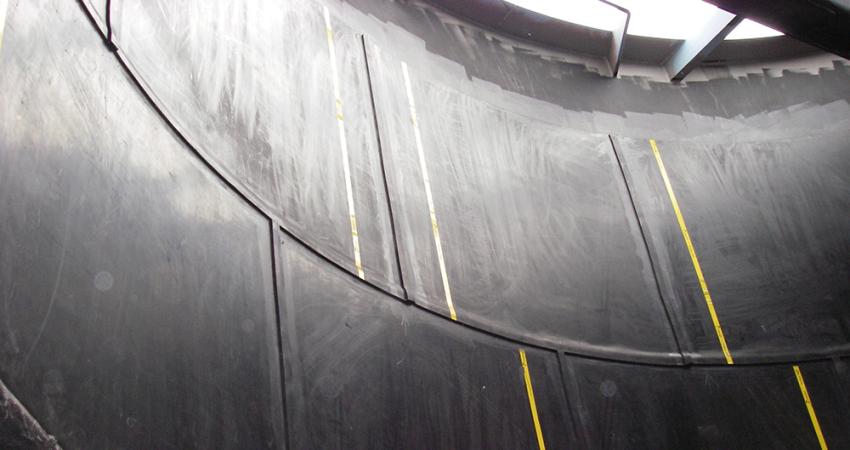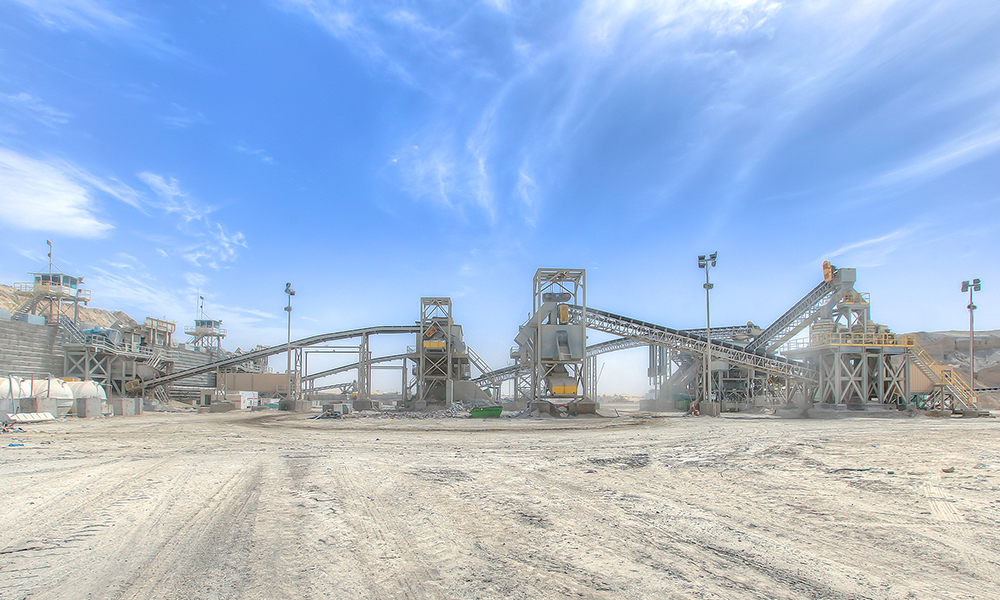
Not long ago, most C&D waste generated by infrastructure building works in the Middle East was dumped in landfills. Not anymore. Across the region, C&D waste is now turned into quality recycled aggregates and used in many major construction projects.
The price of sand, gravel, clinker, cement and other key building materials has soared due to the sheer volume of Middle East construction activity, regional economic expansion and growing urbanisation. As such, the growing availability of recycled aggregates provides much-needed relief for bottom-line-minded project managers. Furthermore, a greater use of recycled aggregates reduces a project's carbon emissions and developers' reliance on imported building materials.

Governments such as the UAE, Saudi Arabia and Qatar have enacted legislation allowing construction firms to use a minimum of 20% to 40% of the recycled aggregates in their infrastructure works, including new commercial and residential builds.
According to the study Securing Valuable Resources for a Sustainable Future by Boston Consulting Group, GCC countries are generating between 105 and 130 million tonnes of waste per annum, primarily from C&D waste, municipal solid waste (MSW), and agricultural waste, with Saudi Arabia and the UAE accounting for around 75% of it. While these estimates are based on official reporting, the study said that GCC countries face additional challenges from limited waste tracking and illegal waste dumping, particularly agricultural waste and C&D waste.
Increased lifespan of landfills
Salman Zafar, an expert in waste management and founder of EcoMENA, a volunteer-driven initiative creating environmental awareness and fostering sustainability worldwide, particularly in the MENA (Middle East - North Africa) region, said that recycling C&D waste can expand the lifespan of landfills and help reduce the cost associated with the maintenance of existing landfills and building new ones.
Zafar said that recycling also helps conserve natural resources and diverts construction waste from landfills, which can generate a substantial volume of harmful odours and gases.
He continued: "Recycled aggregates are less expensive to produce than virgin materials. Using recycled aggregates in construction projects will decrease the load on existing landfills and help companies meet their sustainability targets. By diversion of construction waste from the landfills, companies will also be able to cut down on landfill tax/tipping fee."
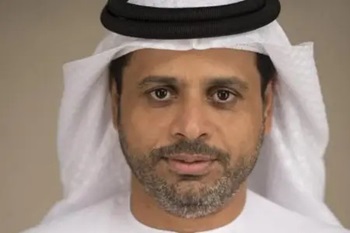
UAE
In the UAE, C&D waste constitutes 70% of the total weight of solid waste. Dubai alone produces nearly 5,000 tonnes of C&D waste every day, with Abu Dhabi generating around 7,000 tonnes daily, accounting for 71% of total waste in the Emirate.
The UAE's Ministry of Climate Change and Environment issued a Ministerial Resolution in 2019 on recycling C&D waste for roads and other similar infrastructure projects. Government and private contracting organisations can use recycled aggregates for 40% of their total building material needs as part of the new resolution, and the decision is implemented by various departments and local civic bodies across the Emirates.
While some developers remain apprehensive that recycled products are inferior to virgin materials, once they confirm the prescribed specifications, they can outperform or remain at least just as good as virgin materials.
The UAE government has even established the Abu Dhabi Waste Management Centre – Tadweer – which not only deals with C&D waste but also other refuse such as used engine oil, old tyres, and plastic items.
Tadweer has set up two factories established for this purpose. The first is in Abu Dhabi and managed by This Middle East Services; the second is in Al Ain and managed by Star International Waste Management LLC. These two units together handle 10,000 tonnes per day.
Tadweer also opened Ghayathi Crusher in the Al Dhafra region in 2018 but closed the plant after a year. The unit had a stockpile of 1.6 million tonnes of material ready to be crushed at the time of closure. It was re-opened in 2021 to promote environmental sustainability and develop an integrated waste management system in Abu Dhabi.
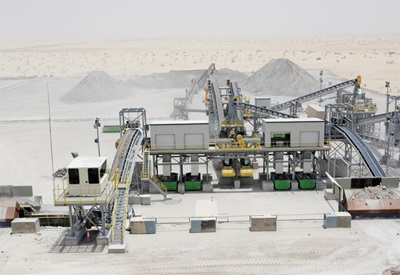
The Ghayathi crusher can handle 2,000 tonnes of C&D waste daily and produces high-quality aggregate for the construction of vital infrastructure projects, such as roads, to contribute to the sustainable development of the Al Dhafra region.
Dr Salem Al Kaabi, director general at Tadweer, said that the decision to reopen the unit aligned with its continued efforts to fulfil Abu Dhabi's vision of diverting 75% of its waste from landfills.
"The crushers run by Tadweer play an important role in achieving this target through recycling huge quantities of C&D waste and turning them into useful materials to use in vital projects in Al Dhafra region and across the country."
The facility will ensure significant savings for the local economy and articulate Tadweer's strategy of meeting the demand for recycled aggregates from the Emirate's crushers, using them in vital projects in collaboration with other government entities and private sector partners.
"All operations at the plant comply with the highest international standards and practices, and the materials generated by the facility will play a critical role in driving construction and infrastructure development in the region," added Al Kaabi.
Private sector's role
The private sector is playing an active role in recycling C&D waste via companies such as Ducon Green, Al Dhafra Recycling Industries, The Rostamani Group and Dulsco.
Al Dhafra Recycling Industries has supplied 1.2 million tonnes of recycled aggregates to the prestigious $11 billion Etihad Rail project undertaken by the UAE government to link all seven Emirates.
BEEAH Recylcing is another UAE-based company that has developed a self-sustaining model for waste management and zero-waste strategies. The company has made great headway towards a zero-waste solution, achieving a more than 76% diversion rate.

Qatar Ministry of Municipality & Environment
Dulsco, a people and environmental company based in Dubai, has signed an agreement with the UAE Ministry of Environment and Climate Change to set up two C&D waste recycling plants in the emirates of Ajman and Um Al Quwain. These facilities recycle the entire C&D waste from the two emirates, converting them into recycled subbase and aggregates for use in construction, replacing up to 40% of the virgin materials.
Qatar
Qatar, which has completed major infrastructure projects including seaports, airports, roads and developing new cities, valued at around $300 billion during the run-up to the 2022 FIFA World Cup, is not far behind compared with other countries in dealing with C&D waste.
An estimated eight million tonnes of C&D waste are generated annually. Qatar's National Environment and Climate Change Strategy (QNE) has implemented a robust policy framework to safeguard Qatar's environment for future generations. As part of the policy, the government has set a target of using 35% of recycled aggregates in various construction projects.
Qatar's Minister of Environment and Climate Change, Sheikh Dr Faleh bin Nasser bin Ahmed Al Thani, said: "My ministry has a fundamental role in the success of sustainable development projects, achieving the country's goals in preserving the environment, promoting green growth, and limiting the effects of climate change."
Al Thani's ministry released a book titled Implementation of Recycled Aggregate in Construction in January 2022. "With the vast investment made in infrastructure projects, Qatar has set targets for the efficient use of natural resources, with a recycling target to use 20% of recycled aggregate to replace primary aggregate in government construction projects by 2022," the ministry said in a statement at the book's official launch.
The state-owned Qatar Primary Materials Company (QPMC) signed a MoU with Qatar's Ministry of Municipality and Environment in 2019. It has been treating C&D waste in the Rawdat Rashid landfill and converting it into materials usable in construction projects.
Besides the Rawdat Rashid landfill, QPMC also manages three more sites at Umm Al Zubar, Jary Alsamar and Bu Salba, respectively, which are the recycling sites of Qatar's Ashgal (Public Works Authority). The combined production of recycled aggregates is 660,000 tonnes per month, according to the Ministry's book.
The company is also looking at the possibility of producing washed sand in the facility that will be established for use in Infrastructure projects and construction projects (including concrete and asphalt layers) to meet Qatari specifications and standards.
Saudi Arabia
In Saudi Arabia, the Kingdom's Sovereign Wealth fund – the Public Investment Fund (PIF) - has set up the Saudi Investment Recycling Company (SIRC).
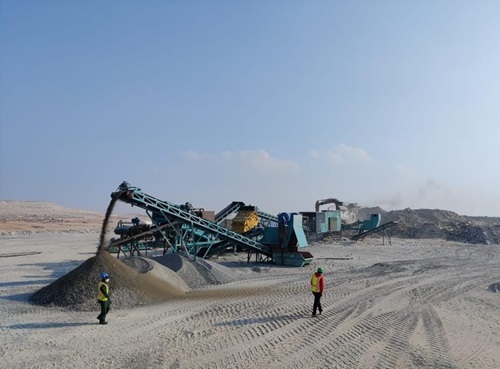
Al Dhafra, UAE. Pic: Tadweer
The state-of-the-art facility is the first step toward meeting the national ambition of diverting 60% of C&D waste from landfills by 2035 in line with the Kingdom's effort to accelerate the transition to a circular economy.
The aim is to produce recycled aggregates that can be used for new roads and buildings while at the same time reducing the estimated 20 million tonnes of C&D waste dumped in vacant plots around the city each year. Located in Al Khair, north district of Riyadh, SIRC's new plant treats up to 600 tonnes of C&D waste per hour.
Riyadh region's Mayor, Prince Faisal bin Abdulaziz bin Ayyaf, assured his administration's support in the project's implementation, saying: "The waste recycling facility in Riyadh will offer numerous economic, social, and environmental benefits to society that are above and beyond the direct return on investment."
Besides SIRC, in 2021, Averda, a global waste management company, opened an integrated and environment-friendly waste management facility for the $20 billion Red Sea Project in Saudi Arabia. Averda said all forms of waste generated by the project were considered in the design of the waste system. Tonnes of rubble, rock and concrete generated by the construction of the foundations, buildings and infrastructure were sorted and treated by special machinery, transforming it into smaller particles. The company said they are then being reused for other purposes, such as aggregate for building roads.
Kuwait
Kuwait has also recognised the environmental and economic benefits of using recycled aggregates. According to a study titled Integrated Solid Waste Management System, 76.2% of Kuwait's waste can be recycled. By installing seven recycling plants, 90% of Kuwait's C&D waste and 95% of its waste tyres and organic waste can be recycled. The raw materials produced by the recycling plants could generate revenue of US$137 million per year. The estimated total profit from the system would reach $450 million in 2040, the Kuwaiti study said.
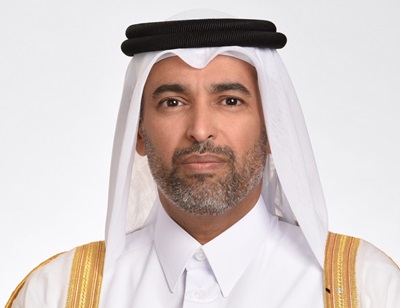
The state-run Public Authority for Industry is planning to build an industrial zone housing companies specialising in waste recycling, including C&D and industrial waste. The zone will cover a two km² area with 215 factories specialising in recycling waste, including tyres, plastics, wood, metals, and construction materials.
Sharifa Al-Shalfan, a member of Kuwait's Municipal Council, has an answer to minimise the impact of C&D waste. She submitted a proposal to the Municipality nearly ten months ago to dismantle buildings instead of demolishing them.
"Dismantling is a good option to reduce waste by reusing and recycling the parts and pieces of buildings. This should be made mandatory for public buildings and optional for privately owned structures," she suggested.
According to Al-Shalfan, the demolition of buildings causes pollution to the environment due to dust resulting from the process, disturbing the owners of neighbouring buildings, and other financial losses from not using the discarded building components.
"Deconstruction contributes to enhancing sustainability by reducing solid construction waste. It leads to promoting the concept of reuse and recycling in the Kuwaiti society, which results in positive effects on the environment and the economy, as well as preserving natural resources," she added.
EGYPT
Egypt has undertaken several projects, including constructing a new capital city, the New Administrative Capital. The C&D waste from these projects is estimated to be four million tonnes per year, constituting 60%-70% of the total waste generated in the country. This waste is managed through disposal in landfills, causing huge deposits of C&D waste, thus posing an environmental problem. Currently, there are eight C&D waste management plants in the country, and 31 more are under various stages of construction.





